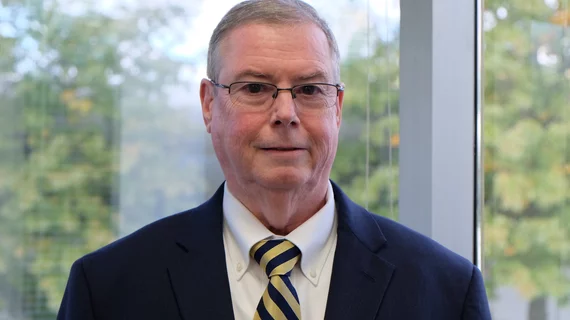Q&A: Fujifilm’s Jim Kuhn on the company’s complete customer experience turnaround
In today’s era of value-based care, healthcare providers and vendors are more focused on customer service than ever before. FUJIFILM Medical Systems U.S.A., Inc. (Fujifilm), for instance, recently made significant strides with its own customer service, skyrocketing to the top of MD Buyline’s customer experience ratings for digital radiography (DR) portables, flat panel detectors and DR rooms (MD Buyline Q3 2018) which includes the highest rating in the portable category for Service Response Time and Service Repair Quality.
Jim Kuhn, director of MS customer support, FUJIFILM Medical Systems U.S.A., Inc., spoke with Health Imaging about this transformation. That full conversation can be read below:
What was the motivation behind Fujifilm's initiative to improve its customer service experience?
Jim Kuhn: Well, enhancing the customer experience is always first and foremost in our minds. Everything we do impacts the lives of patients and it’s something we take very seriously.
But when our chief operating officer, Johann Fernando, Ph.D., joined the team in 2015, he set a goal for our entire team: reach No. 1 or No. 2 in the MD Buyline ratings, the healthcare industry's leading assessor of product and technology performance, for DR portables and DR rooms. We saw it as a formidable task, because we had some work to do to get there, but Mr. Fernando set the bar for our entire organization. We focused on system performance, reliability, clinical use, installation effectiveness, service repair time and service repair quality.
After evaluating your service processes, what kinds of changes did you look into implementing throughout your organization?
When we first started working together as a group and evaluating our processes, we consulted with MD Buyline for some guidance on which specific areas to work on to achieve a top ranking. That, in turn, led to many initiatives including improved soft skills and technical training, a better customer feedback process, and a more complete parts inventory. The information they were able to give us was broad but helpful. From there, we began formulating our plan for improvements based upon a holistic, whole company approach.
One of the things that came up again and again was that we had “stealth engineers,” which means our engineers were servicing equipment and then leaving without talking to the customer at all. So we talked to our team and invested in soft skills training and customer interface training, which helped our engineers improve tremendously. We also implemented something called, “Three Deep,” meaning engineers have to talk to three people about the situation when they arrive on site and then talk to three people when they leave. We also implemented a policy requiring engineers to leave a note if, say, they were on site conducting a repair inthe middle of the night and nobody was present. That way, the customer would still know the status of their equipment. We saw improved scores almost immediately after making those initial changes.
Another topic we felt was important was engaging customers with the opportunity to provide real-time feedback. For every service call, there is a survey that goes out—the customer responds to that survey and we’re able to immediately address feedback. On the same day as the service call, we call the imaging manager if there is an issue we need to address. We always had surveys in the past, but we typically replied to them and reached out to our customers on a monthly basis. That was often too long for people to even remember their feedback and we missed the opportunity to provide satisfactory service follow-up. That impacted our customer service scores tremendously.
We implemented other improvements as well. We changed our dispatch system so that we could respond to customer issues quickly and efficiently. And we spent a lot of time analyzing our bills of materials for our products, which resulted in engineers having the right equipment for installations at the right time.
Parts inventory is another area we addressed. By reviewing our inventory more frequently and making sure we have the right parts ready to ship, we can take care of any issues right away.
We also enhanced our technical training by reaching out to our managers on a quarterly basis to ensure engineers were trained on all the equipment located around them. This keeps our staff’s technical knowledge updated.
When you trained Fujifilm’s employees in these various areas of improvement, what was the process for that? What did that actual training look like?
We hired an outside organization to tailor their training courses to fit our business, and then scheduled two or three days for the soft skills training. Every engineer on the field has completed that training. It was an investment on our part to make sure these engineers had the right skillset. That’s how we implemented that “Three Deep” policy, for example, and our other new policies.
How do these efforts help Fujifilm’s customers provide better value-based care to patients?
This entire effort is designed to improve the experience of our customers, which ultimately improves the patient experience. We knew that making our customers happier and providing them with any assistance they need is going to help their patients receive the best care possible.
How is Fujifilm benchmarking its customer service success and customer feedback?
We measure real-time customer feedback each day and we also have an annual customer experience survey to get a clear picture of what is going on with our customers. The latest survey showed us that things are much better than before and serious improvements had taken place.
We also look at commentary from MD Buyline on a quarterly basis to make sure we are exactly where we want to be. We don’t want to miss anything when it comes to customer concerns or issues.

